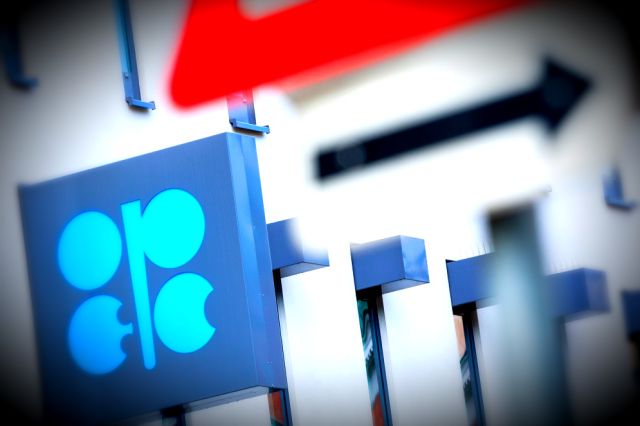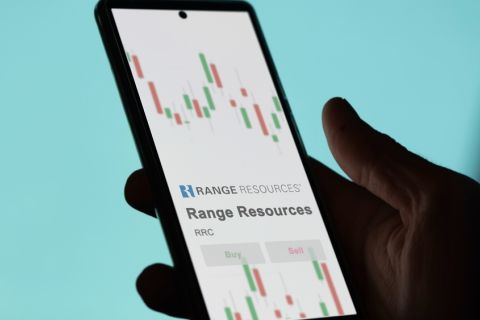
OPEC and its allies led by Russia have been reducing oil output since 2017 to prevent prices from sliding amid soaring production from the U.S. (Source: Slavko Sereda/Shutterstock.com)
OPEC and its allies look set to extend oil supply cuts this week at least until the end of 2019 as Iran joined top producers Saudi Arabia, Iraq and Russia in endorsing a policy aimed at propping up the price of crude amid a weakening global economy.
Iranian Oil Minister Bijan Zanganeh told reporters July 1 he would support prolonging output cuts by six to nine months. Tehran has in the past objected to policies put forward by arch-rival Saudi Arabia, saying Riyadh was too close to Washington.
"I have no problem with a production cut ... It's going to be an easy meeting as my stance is very clear," Zanganeh told reporters upon arriving in Vienna.
__________________________________________________________________________________________________
RELATED:
“Petroleum Détente: OPEC Makes Peace With Shale” featured in the June 2019 issue of Oil and Gas Investor
__________________________________________________________________________________________________
The U.S. is not a member of OPEC, nor is it participating in the supply pact. Washington has demanded Riyadh pump more oil to compensate for lower exports from Iran after slapping fresh sanctions on Tehran over its nuclear program.
OPEC and its allies led by Russia have been reducing oil output since 2017 to prevent prices from sliding amid soaring production from the U.S., which has become the world's top producer this year ahead of Russia and Saudi Arabia.
Fears about weaker global demand as a result of a U.S.-China trade spat have added to the challenges faced by the 14-nation OPEC group in recent months.
Russian President Vladimir Putin said June 29 he had agreed with Saudi Arabia to extend existing output cuts of 1.2 million barrels per day (bbl/d), or 1.2% of global demand, by six to nine months—until December 2019 or March 2020.
Saudi Energy Minister Khalid al-Falih said the deal would most likely be extended by nine months and no deeper reductions were needed.
"It’s a rollover and it’s happening,” Falih, whose country is the de facto leader of OPEC, told reporters on June 30.
Benchmark Brent crude has climbed more than 25% since the start of 2019 but prices could stall as a slowing global economy squeezes demand and U.S. oil floods the market, a Reuters poll of analysts found.
Brent rose by $2 on July 1 towards $67 per barrel as traders cited OPEC's resolve to curb output.
Worsening Geopolitical Risk
The output-cutting pact expired on June 30. OPEC meets in Vienna on July 1 followed by talks with Russia and other allies, a grouping known as OPEC+, on July 2. The July 1 meeting is not expected to start before 6-7 a.m. CDT (11-12 GMT).
Zanganeh said he would not object to deepening the cuts but expressed frustration that Putin had announced the deal at a G20 summit in Osaka before waiting for OPEC to gather in Vienna.
"The important thing to me is that OPEC remains OPEC. It has lost its authority and it’s on the verge of collapse," Zanganeh said. "Iran is not going to leave OPEC but I believe OPEC is going to die with these processes."
Zanganeh also said he would reject a proposal to sign a new charter for cooperation with non-OPEC, led by Russia: "I believe it is not the time to discuss this matter because inside OPEC we have a lot of difficulty."
Iran's exports have plummeted to 0.3 million bbl/d in June from as much as 2.5 million bbl/d in April 2018 due to Washington's fresh sanctions.
The sanctions are putting Iran under unprecedented pressure. Even in 2012, when the European Union joined U.S. sanctions on Tehran, the country's exports stood at around 1 million bbl/d. Oil represents the lion's share of Iran's budget revenues.
Washington has said it wants to change what it calls a “corrupt” regime in Tehran. Iran has denounced the sanctions as illegal and says the White House is run by “mentally retarded” people.
"Worsening tensions between the U.S. and Iran add potential for oil price volatility that could be tricky for OPEC members to manage," said Ann-Louise Hittle, vice president of macro oils at consultancy Wood Mackenzie.
"Geopolitical risk means the supply outlook is tightening, offsetting the moderate weakening in oil demand growth thus far this year,” she added.
Recommended Reading
US Raises Crude Production Growth Forecast for 2024
2024-03-12 - U.S. crude oil production will rise by 260,000 bbl/d to 13.19 MMbbl/d this year, the EIA said in its Short-Term Energy Outlook.
To Dawson: EOG, SM Energy, More Aim to Push Midland Heat Map North
2024-02-22 - SM Energy joined Birch Operations, EOG Resources and Callon Petroleum in applying the newest D&C intel to areas north of Midland and Martin counties.
Tethys Oil Releases March Production Results
2024-04-17 - Tethys Oil said the official selling price of its Oman Export Blend oil was $78.75/bbl.
CEO: Continental Adds Midland Basin Acreage, Explores Woodford, Barnett
2024-04-11 - Continental Resources is adding leases in Midland and Ector counties, Texas, as the private E&P hunts for drilling locations to explore. Continental is also testing deeper Barnett and Woodford intervals across its Permian footprint, CEO Doug Lawler said in an exclusive interview.
Range Resources Expecting Production Increase in 4Q Production Results
2024-02-08 - Range Resources reports settlement gains from 2020 North Louisiana asset sale.




